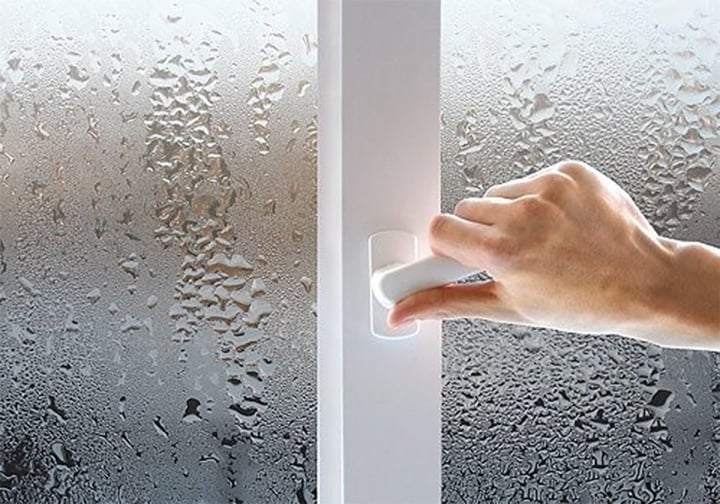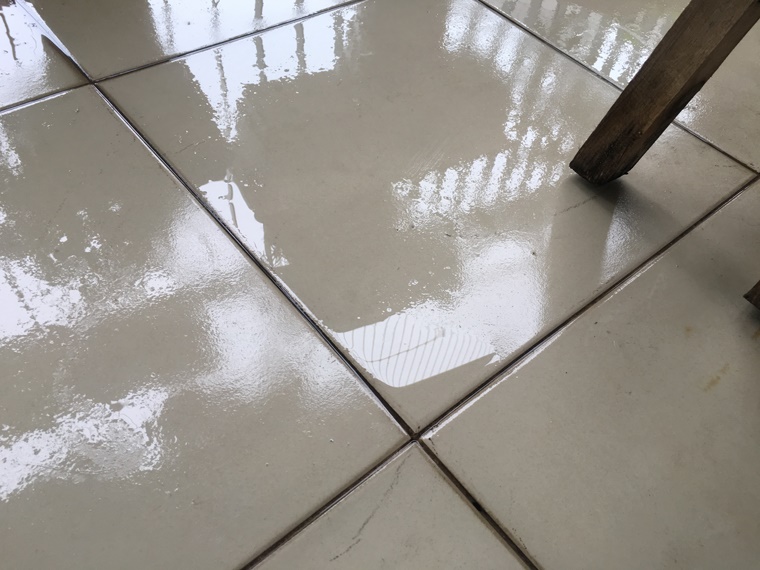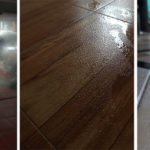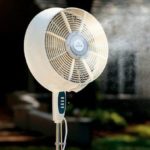The season of spring in the North is often considered a “specialty” of high humidity. During these days, the floor, windows, and walls are usually extremely damp, dirty, and uncomfortable. To overcome this situation, many people continuously turn on fans or open doors to ventilate, hoping that the wind will quickly dry the house. However, this only worsens the humidity. When the house is damp, do not turn on the fan or open the door, follow this method to dry the house within 15 minutes.
Close all doors and bathroom doors

Close all doors and bathroom doors
In fact, opening doors only worsens the humidity because the air humidity is very high at this time. Therefore, the first golden rule to remember to effectively prevent dampness is to close all doors.
In addition, you should close the bathroom door as well, as this area is considered the most humid in the house. Close the bathroom door after use to prevent steam from escaping and making the floor damp. Besides, turn on the fan in the bathroom to push the moisture out.
Turn on the air conditioner in dry mode
If you have an air conditioner installed in your house, you should turn it on in dry mode to help dehumidify the air. This method is considered the most effective in combating dampness. Moreover, when the air conditioner is on, the air inside the house will circulate, ensuring the health of the family members.
Use aromatic oils
With the humid windy weather, houses, clothes, and bedsheets can become musty, causing an unpleasant smell. Therefore, using aromatic oils with a pleasant scent also helps improve the mood and make the house smell fresher.
Clean the house with dry cloth
During damp days, it is best to avoid cleaning the house with water, as it not only makes the floor dirty but also makes it even more humid. It is best to use a dry and clean cloth to wipe off the water on the floor. If cleaning is necessary, squeeze the cloth thoroughly before wiping, then use a dry and clean cloth to wipe again immediately.
Use moisture absorber materials
There are many boxes/pearls for absorbing moisture available on the market. You can buy them and place them in corners of the house to reduce humidity.
In wet places like the kitchen, hand washing area, water can seep through and the walls become damp. You can use newspapers to stick on the damp walls to absorb moisture, this method is quite economical and effective.
Use charcoal in corners, under beds, etc., but don’t burn the charcoal, just place a cool bowl of charcoal in the desired locations. Burning charcoal releases CO2 gas which is harmful to the health of family members, and the fire is dangerous for children.
In addition, you can use quicklime. Quicklime, with the chemical formula of CaO or also known as Calcium oxide, is known for its excellent moisture absorption capability, so it will be an effective way to combat dampness in the house. You just need to place a barrel of quicklime in humid areas and close the doors, the humidity in the room will quickly be reduced.
Plant humidity-absorbing plants
Planting moisture-absorbing plants in the house, such as orchids, coffee plants, moonlight plants, yellow lemon trees, burnt leaf plants, tiger tongue plants, bonsai trees, is also considered an environmentally-friendly solution that can effectively reduce the humidity in your room.
Therefore, you just need to place these pots of plants in humid and well-ventilated rooms and regularly take care of them to keep them fresh.
Some other notes when the house is damp

The house leaks when it is damp
– To prevent foul odors caused by damp weather, you can also place aromatic oils in corners of the house or burn orange or pomelo peels to give your house a pleasant scent.
– Avoid placing electronic devices such as TVs, phones, computers, directly on the floor or against the wall to prevent water from entering inside and causing damage or electric leakage. It is recommended to place these devices about 1m above the ground, about 10-15cm away from the wall.
– Limit washing clothes on damp days, avoid drying clothes with a fan, as they will take longer to dry and may develop an unpleasant smell.
– Items made of bamboo or wood such as chopsticks, mosquito nets, bowls, should be rinsed with hot water after washing and then dried before storing to prevent mold.
– Keep electronic devices away from floors and walls to prevent water damage and electric leakage.
– Limit washing and drying clothes during damp days to avoid musty smells.
– Rinse and dry bamboo or wooden items like chopsticks and bowls to prevent mold growth before storage.
How to Choose the Best Air Conditioning Setting for a Humid and Damp Home
As the cooler temperatures of winter and spring begin to set in across the Northeast, families are confronted with an additional worry – how can they protect their homes from mold and dampness? While a dehumidifier is an effective measure, are there other air conditioning or cooling methods which can be used to ensure the air remains free of moisture and fungi?






































